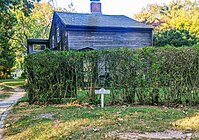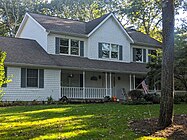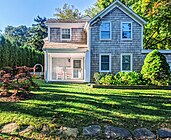
Oak Bluffs is a town located on the island of Martha's Vineyard in Dukes County, Massachusetts, United States. The population was 5,341 at the 2020 United States Census. It is one of the island's principal points of arrival for summer tourists, and is noted for its "gingerbread cottages" and other well-preserved mid- to late-nineteenth-century buildings. The town has been a historically important center of African American culture since the eighteenth century.
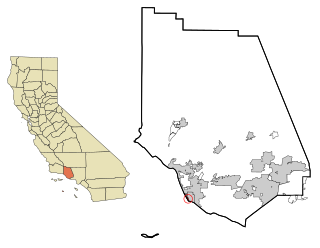
Channel Islands Beach is an unincorporated community in Ventura County, California, United States consisting of three historic neighborhoods: Hollywood Beach, Hollywood by the Sea, and Silver Strand Beach. This densely populated narrow 1.3-mile-long strip (2.1 km) along the coastal edge of the Oxnard Plain was subdivided using the glamor of Hollywood to sell lots in the mid 1920s since the sand dunes had been used for movies. Adjacent development has left this sandy beachfront neighborhood hemmed in by Channel Islands Harbor and Naval Base Ventura County. The harbor mouth separates them into two communities resulting in a round-about travel route around the harbor between them although the Channel Islands Beach Community Services District provides local utilities services to the entire neighborhood. The Special-purpose district has an elected Board of Directors which provides a forum for the unique concerns of the community. Lying immediately adjacent but outside the corporate boundaries of the City of Oxnard and the City of Port Hueneme, they are governed by the county Board of Supervisors.

Sag Harbor is an incorporated village in Suffolk County, New York, United States, in the towns of Southampton and East Hampton on eastern Long Island. The village developed as a working port on Gardiner's Bay. The population was 2,772 at the 2020 census.
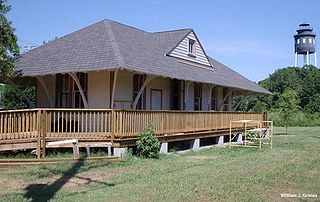
Cape Charles is a town / municipal corporation in Northampton County, Virginia, United States. The population was 1,009 as of the 2010 Census.

The Village of East Hampton is a village in Suffolk County, New York. It is located in the town of East Hampton on the South Fork of eastern Long Island. The population was 1,083 at the time of the 2010 census, 251 less than in the year 2000. It is a center of the summer resort and upscale locality at the East End of Long Island known as The Hamptons and is generally considered one of the area's two most prestigious communities. The Mayor of East Hampton Village is Jerry Larsen, elected on September 15, 2020.

Southampton is a village in the Town of Southampton in Suffolk County, on the South Fork of Long Island, in New York, United States. The population was 3,109 at the 2010 census.

The Town of East Hampton is located in southeastern Suffolk County, New York, at the eastern end of the South Shore of Long Island. It is the easternmost town in the state of New York. At the time of the 2020 United States census, it had a total population of 28,385.

The Montaukett ("Metoac"), more commonly known as Montauk are an Algonquian-speaking Native American people from the eastern and central sections of Long Island, New York.
Sans or SANS may refer to:
Edward Richard Dudley was an American lawyer, judge, civil rights activist and the first African-American to hold the rank of Ambassador of the United States, as ambassador to Liberia from 1949 to 1953.
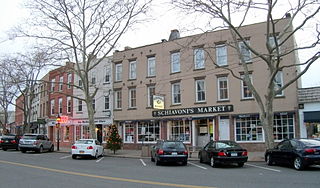
Sag Harbor Village District is a national historic district in Sag Harbor, Suffolk County, New York. It comprises the entire business district of the village. It includes 870 contributing buildings, seven contributing sites, two contributing structures, and three contributing objects. It includes the First Presbyterian Church, a National Historic Landmark building designed by Minard Lafever.
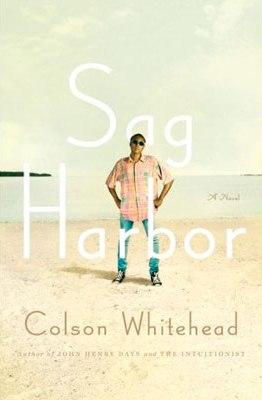
Sag Harbor is a 2009 novel by author Colson Whitehead.

William Pickens was an American orator, educator, journalist, and essayist. He wrote multiple articles and speeches, and penned two autobiographies, first The Heir of Slaves in 1911 and second Bursting Bonds in 1923, in which he mentioned race-motivated attacks on African Americans, both in the urban riots of 1919 and by lynching in 1921. His works called for the liberty and emancipation of African Americans. He devoted much of his life traveling the world as a spokesperson for the freedom of African Americans, and worked to promote the beliefs of W.E.B Dubois.
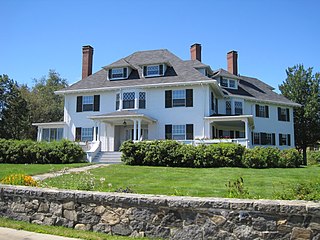
The Little Boar's Head Historic District encompasses an area of summer resort and beachfront properties in North Hampton, New Hampshire. Located on New Hampshire's seacoast roughly between North Hampton State Beach and Bass Beach, the district is almost entirely residential, consisting mainly of houses built as summer vacation spots in the late 19th and early 20th centuries, with associated beachfront amenities. The district was listed on the National Register of Historic Places in 1999.
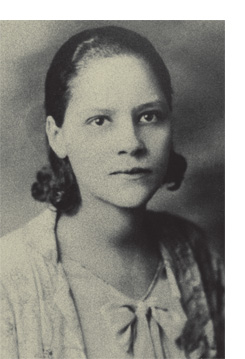
Amaza Lee Meredith was an American architect, educator and artist. Meredith was unable to enter the profession as an architect because of "both her race and her sex" as an African-American woman, and worked primarily as an art teacher at Virginia State University, where she founded the art department. She is best known for her residence, Azurest South, where she and her partner, Dr. Edna Meade Colson, resided together. Moreover, she co-founded the Azurest Syndicate Inc., a vacation destination for black middle class Americans on Sag Harbor, New York. As an educated black woman, Meredith is a rare example of a financially and socially independent black woman living in the time of Jim Crow Segregation Laws.
Edmund David Hollander is an American landscape architect and educator. A New York City native, he is the president of Hollander Design Landscape Architects, a New York-based firm known for environmental planning, landscape design and horticulture. The firm provides services to residential, commercial and civic clients.
St. David African Methodist Episcopal Zion Cemetery is a historic cemetery located in the Eastville community of Sag Harbor, New York. It is anchored by the AME church, the Eastville Historical Society House on NY 114 and the St. David Cemetery. The site has around 100 graves, including that of Reverend J. P. Thompson, the first pastor of the St. David AME Zion Church.
Renee V.H. Simons is a former Fortune 500 executive and the president of SANS Sag Harbor, an award-winning nonprofit organization that successfully organized and advocated for the New York State and National Register of Historic Places registration of the historically Black beachfront enclaves in the Sag Harbor communities of Sag Harbor Hills, Azurest, and Ninevah Subdivisions.
Frank Wimberley is an African American abstract expressionist artist.











